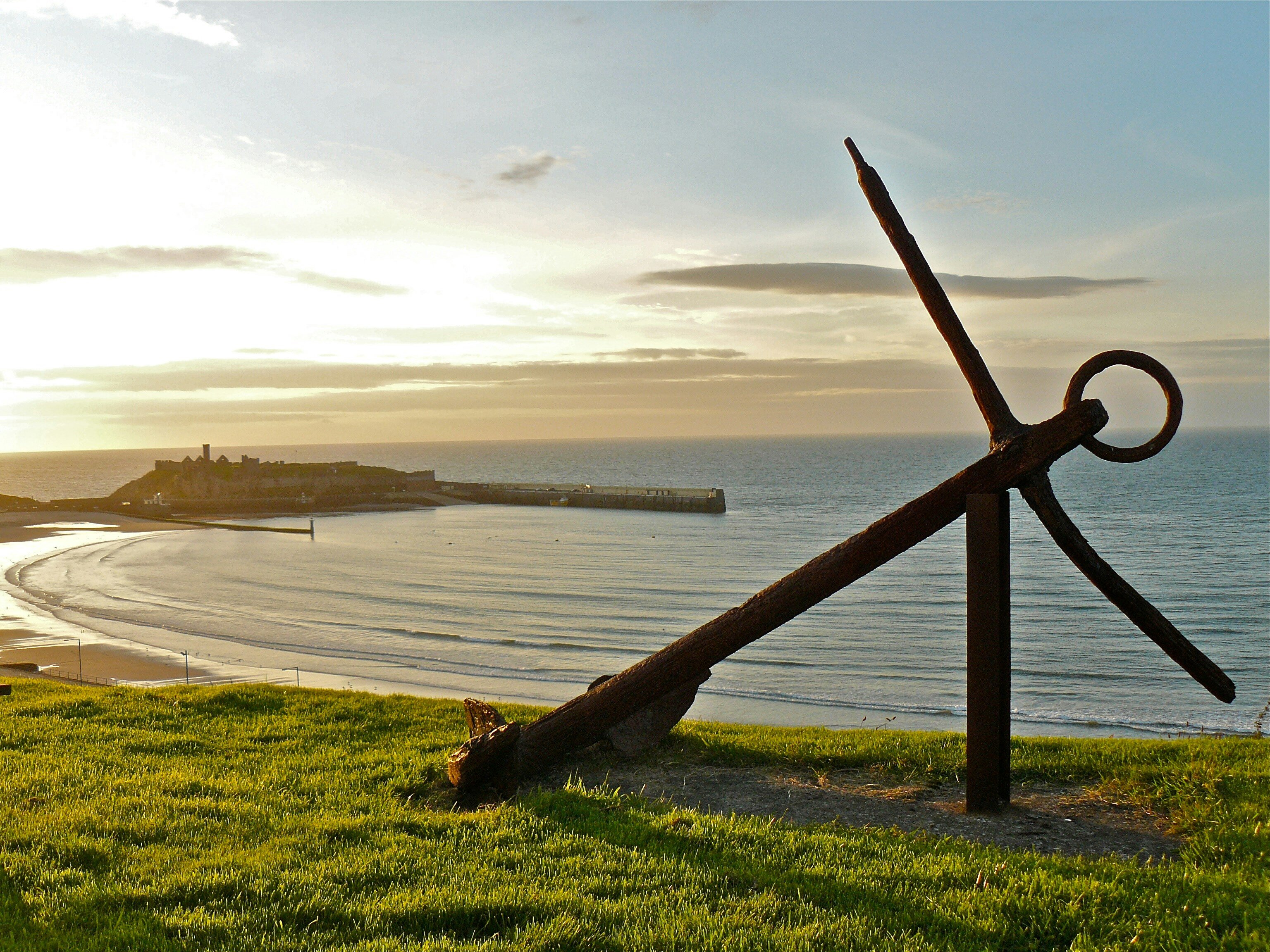Why Backlinks Are Important For SEO & How You Can Link Build Right Now

Share this post
Backlinking in SEO is one of the major ways Google and other search engines determine the relevancy and authority of your website. Google regards links as one of the top two criteria for search rankings (Search Engine Land), and 92% of marketers believe backlinks will still be important to ranking in 5 years time (Aira). So, backlinking is an invaluable factor in deciding where your site ranks.
You’re probably wondering right now, if backlinking is vital for search engine optimisation, how do I earn links to my website?
Building great inbound links to your website looks like hard work. You might want to resort to spamming blog comments with links to your website. DON’T. This is neither effective nor necessary.
→ Check out our Ultimate Guide to Search Engine Optimisation
So what do you need to create an impactful link building strategy? Simply double down on creating great content! If you get it in front of the right people, they will share it.
With this in mind, Wave will get you started with tested, effective and creative tricks to help you build legitimate inbound links. Read on to see how you can incorporate backlinking into your wider SEO strategy.
Contents
- What are backlinks?
- White hat vs black hat link building
- Write and maintain an amazing blog
- Earn backlinks by being social with your blog
- Write guest blogs
- Get experts to link out to you
- Earn backlinks from directories
- Write ultimate guides
- Sponsor or speak at an event
- Do a backlink analysis
- Fix broken links
What is link building?
Link building is the process of increasing the number of quality links that send people to your website. This will help you earn more referral traffic, increased domain authority and climb the SEO rankings on search engines like Google.
What are backlinks?
Backlinks are also referred to as inbound links or incoming links. They are a form of off-page SEO. In essence, a backlink is a hyperlink from an external website to your website.
They are different from outbound links (where you link out to an external website) and internal links (where you link to another page of your website).
For example, in the introduction there are three links and they can be broken down into the following:
Outbound links – Search Engine Land and Aria. We have linked out to them. To us, they are classed as outbound links. To them, we have given them a backlink.
Internal links – Wave. This keeps you on our website and links through to our home page.
Unfortunately, from a page editor POV, we can’t tell how many backlinks reach out to this page. However, we know we have given both Search Engine Land and Aria one backlink each.
Backlinks would do two great things to this page.
- Boost traffic to the page and increase overall website traffic too
- Help us rank higher in search engines
Search engines view backlinks as authoritative. The more backlinks you have from high-quality, high-authority sites, the better the boost to your search rankings.
What role does anchor text play in backlinking?
Anchor text, not to be confused with anchor links, is the text that is hyperlinked. For example, if I hyperlink to our blog about SEO keyword research, the anchor text is “SEO keyword research”.
Good anchor text can either be naturally occurring keyword optimised text, so don’t just link like crazy, or contextual words like ‘Learn More’. Search engines are smart enough to understand the context of a sentence or paragraph, making more generic anchor text valuable too.
White Hat vs Black Hat Link Building
Google has ironed out the kinks and made sure that it promotes content written by humans for humans over content just designed to get clicks.
White Hat and Black Hat are terminologies referring to the right and wrong way of building out links and getting better SEO results. If Google determines your approaches to growth are shady, it will penalise you and damage your rankings.
The advice handed out further down is all classed as White Hat. However, we feel we should point out some Black Hat backlink methods you should avoid:
- Taking part in a link scheme. A link scheme is a way to buy or sell links at an excessive rate or in a way that is determined to have deliberately manipulated your age ranking. Buying links can sometimes be OK, but it is safer to avoid.
- Too many link exchanges. This means having too many links exchanged between your site and one other.
- Using an automated service to distribute your links and give you links.
- Overly optimised press releases. Press releases are a great way to get links, however, the natural way of writing a press release does not lend itself naturally to optimised anchor text. Do this, and Google will flag your site.
- Running advertorial or too many guest blog posts. Guest blog posting is great (see more later) but excessive amounts might fall outside Google’s policies and you could be penalised.
Now that you know what to avoid, let’s get into some 100% White Hat ways to build up your backlinks!
Best Ways to Link Build 100% White Hat Links
1) Write and maintain an amazing blog
We’ll get the biggest and most daunting tactic out of the way for you right now – writing a kickass blog with content people want to share is one of the most important ways to generate backlinks.
Write content related to your industry (Wave is a marketing company so we write this marketing-based blog!) that will solve the problems your readers face. This way, they’ll be compelled to share.
Backlinking is futile if your website’s content isn’t relevant to your audience and isn’t supported by a site infrastructure. Even though inbound links are one of the biggest tenets of SEO, content is king.
2) Earn backlinks by being social with your blog
Blogs might not be as en vogue as TikTok, but social sharing is part of their DNA. This means linking out to other blogs, and if done consistently, you should start getting some links back.
Also, you can’t write about everything ever, so plugging gaps with other people’s content will improve your readers’ experience of your blog. Plus don’t forget you can then share your blog content on your social media channels too. Platforms like LinkedIn are the perfect arena to share your professional knowledge with others, so it’s a win-win situation for your followers and you.
3) Write guest blogs
Write blogs to be hosted on other sites. This way, you will be able to build a network of other companies and a network of inbound links.
Not sure who to write for? Most media outlets will accept submissions that are original and relevant to their readers. They will also give you a precious backlink.
4) Get experts to link out to you
In your post, get experts on particular topics to appear on your blog. After you’ve produced your round up of their views, you can reach out to them to get them to share. As influencers in their fields, they’ll want to share your article and give you an authoritative backlink!
Even better, this tactic goes beyond link building. You will also increase your reach and be promoted by a trusted figure. Now, we’ve also tapped into brand acquisition and brand awareness!
Does your website score top marks?
See how it is performing for free here!
5) Earn backlinks through directories
No, we’re not talking about the Yellow Pages or the Argos catalogue (remember them? Showing our age a bit aren’t we!) But, online directories are still valuable sources for backlinks and local SEO.
You will want to avoid spammy directories as this will damage your SEO ranking, and focus on the ones people actually use like Google My Business, Yelp or TripAdvisor. You don’t have to only be on the main ones, more industry-specific or local directories can be a great way to promote your business to local customers and build your backlinks.
6) Publish ‘Ultimate Guides’
Ultimate Guides are exactly that: they are long pieces of content that exhausts every part of a topic. It covers enough information, from beginners tips to advanced topics to fringe elements, that people don’t have to go anywhere else to solve their problems. All they need to do is bookmark one webpage.
The content doesn’t have to be an ‘Ultimate Guide’, it just has to go above and beyond.
For readers, this makes everything much simpler as they won’t have to scour the internet for all the information they need. All they have to do is visit your page.
For you, ultimate-guide-type pages fulfil another fundamental SEO method: categorised content! You can turn your ultimate guide into a pillar page and branch out into detailed, but shorter, blog posts mentioned in your guide.
Pillar pages and topic clusters are a beloved off-page SEO tactic that boost your relevancy!
7) Sponsor or speak at an event!
Events are a great way to get backlinks. Why? If an event books you as a speaker or a sponsor, they will want to promote you! You can put in your terms that they must link to your website.
If you’re speaking, to make sure your time yields beneficial results, make your presentation sharable and host it on your website. This way, anyone watching will have to link to you to share to their network!
A great example of this is that Wave recently hosted a fireside chat during Squarespace Circle Day – learn more about Wave's relationship with Squarespace.
8) Do a backlink analysis
Like how you put together a competitor analysis or do put together a TOWS analysis when starting your marketing strategy, it is important to get stock of your current backlink status. To do this, you must do a backlink analysis. So let’s dive into that some more.
What is a backlink analysis?
A backlink analysis is a comprehensive review of your website’s current backlinks. Doing one is like going to the dentist. You should get regular check ups, but if you notice something is wrong, you can always book an appointment. It is a great way to monitor the health of your website and should be a KPI when you report on website performance.
It is also a great way to keep track of your competitors. You will be able to see what they are doing and see the tactics you can potentially use too.
How do you do a backlink analysis?
- Choose a couple of competitor sites as well as your own to analyse.
- Select an auditing tool to audit your backlinks. SEMRush, Moz or Google Search Console are good ones to check out!
- Find out the total number of backlinks you have, the number of referral domains and the top linked pages.
- Analyse the results – see if the anchor text is too spammy and see your competitors referral domains to identify places for growth.
Best Free Backlink Checker: Ahrefs Backlink Checker
9) Fix any broken backlinks
You update your website almost every day and sometimes this includes unpublishing pages or changing URLs for better SEO. This means that websites that previously linked out to you will no longer have the right inbound link. Send them an email with the right link asking them to change it!
Want help with your building your backlinks or general SEO? Talk to Wave
Wave is a team of SEO experts who can help your business climb the rankings and get eyes on your site. If you’re having trouble getting your SEO in line, contact us today.





